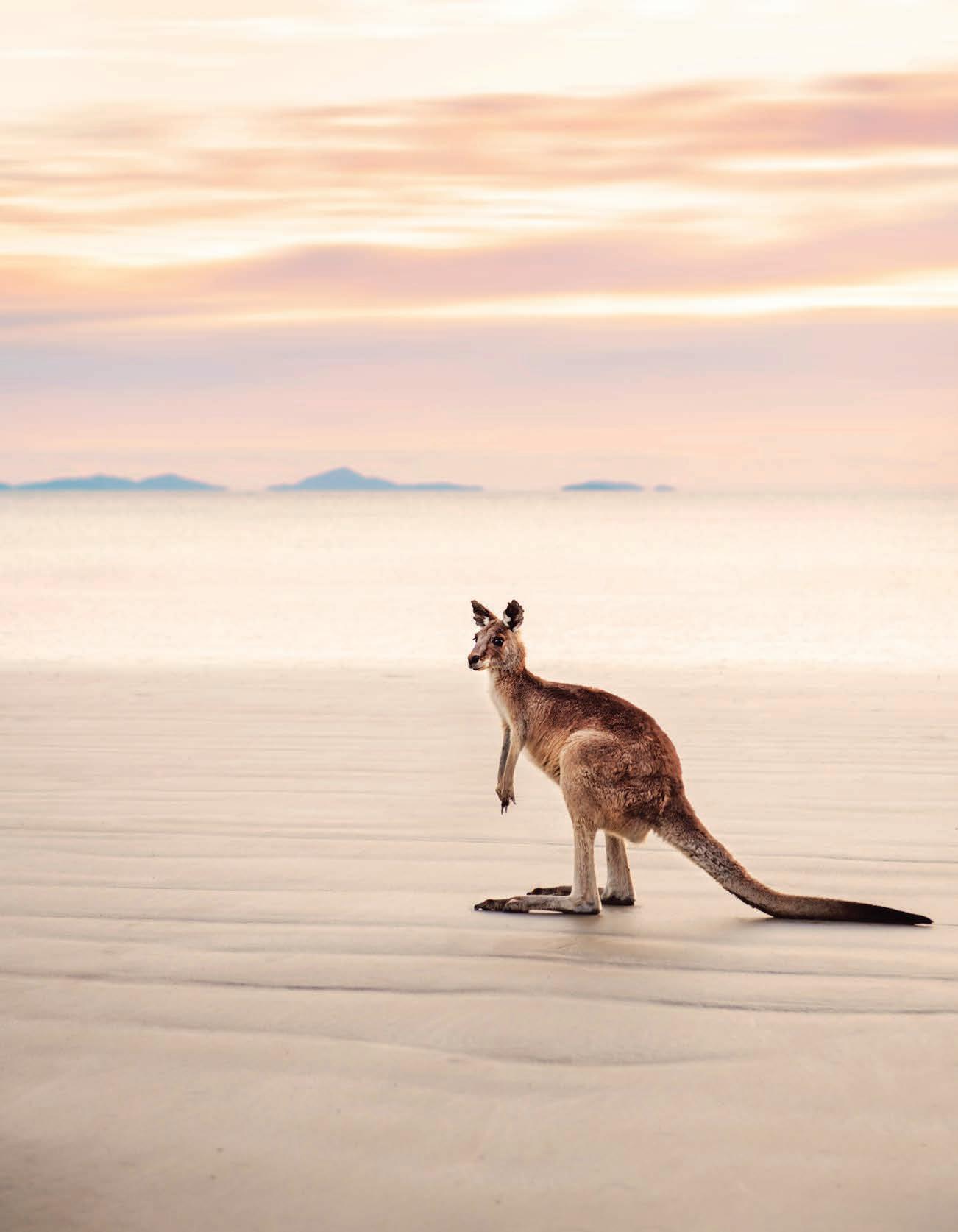
2 minute read
FROM THE HEART
Gamilaraay artist Juanita McLauchlan’s first major solo exhibition gii mara-bula / Heart Hand-also explores family connections and dual histories.
Words: Emily Riches
Advertisement
Inside Wagga Wagga Art Gallery, blankets printed with leaves and sewn with possum skin breathe from the walls. Sculptural necklaces are soft and beautiful, begging to be handled.
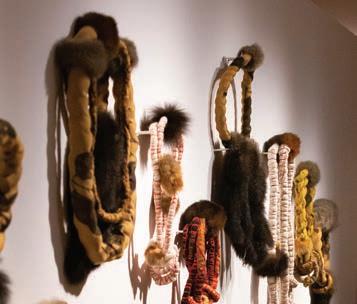
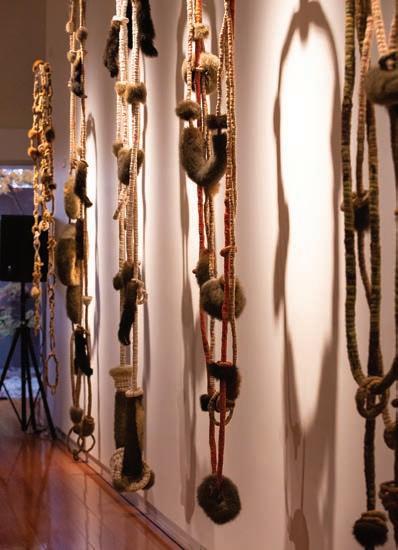
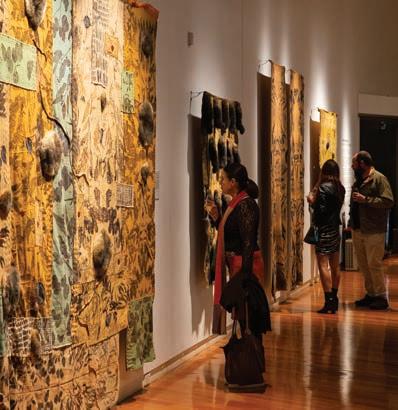
This mesmerising work is part of Juanita McLauchlan’s exhibition gii mara-bula / Heart Hand-also, created with the support of Wagga Wagga Art Gallery’s Regional Artist Development Program and the 2022 Windmill Trust Scholarship. The title is a nod to Juanita’s family connections and dual histories, and her focus on personal belongings and body adornments.
As a trained printmaker, the love of art and printmaking has been with her from an early age. Having lived on Wiradjuri Country in Wagga Wagga for 20 years with her husband and five kids, she feels the pull of Country guiding her artmaking practice.
Juanita uses local native plants and eco-friendly dyes to create large contact prints on woollen blankets.
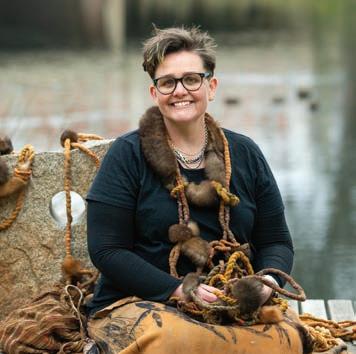
“So I’m still printing,” she observes, “but it’s just in a totally different way.”
The woollen blankets she uses are sourced from op shops. As she says, “they’ve all had a history of some sort. Most of them have holes in them and are classed as ‘unworthy’ blankets, but they’re beautiful, and they’ve had a life.”
This attention to history, the power of objects, family and identity are central to Juanita’s art practice, as she celebrates and explores both the Aboriginal and European sides of her family heritage.
Her fifteen sculptural necklaces, titled “Standing at the heart of seven generations II,” look both forward and back, to the generations who came both before and will come after. To create the necklaces, she cuts the dyed blankets into strips and stitches them with red cotton thread, a European fibre, and possum fur ethically sourced from New Zealand, a material used traditionally to make cloaks and blankets.
“The stories of the plants printed onto the fibre is actually rolled up and hidden in that necklace,” she says. “In each of the works, there’s something hidden that only I know is there. That idea of being hidden came from my grandmother’s side of the family, who didn’t talk about her being Aboriginal.”
She says: “I blanket stitch around them twice, to represent both worlds and the idea of holding each other tightly. They also resemble umbilical cords, representing life and connection. It’s multiple layers of family: acknowledging the past and both sides of my heritage, Aboriginal and European, and how everything works together. Possum fur and woollen blankets are both for nurturing, protection, warmth and love. It’s acknowledging that we’re proud of who we are.”
The necklaces are textural and tactile, which for Juanita is extremely important. “I’m a very hands-on person,” she says. “We actually made some pieces for the people who come and visit the gallery space to touch and handle. They are things that are supposed to be worn.”
Her work engages with continuity and traditional artmaking practices, but also gestures to the future. As she notes: “Traditions are made and passed down, but traditions also evolve and change with each generation. I think it’s quite important to understand that.” gii mara-bula / Heart Hand-also is curated by Julie Ewington. See it from 13 May-20 August at the Wagga Wagga Art Gallery, a cultural facility of Wagga Wagga City Council. TA










